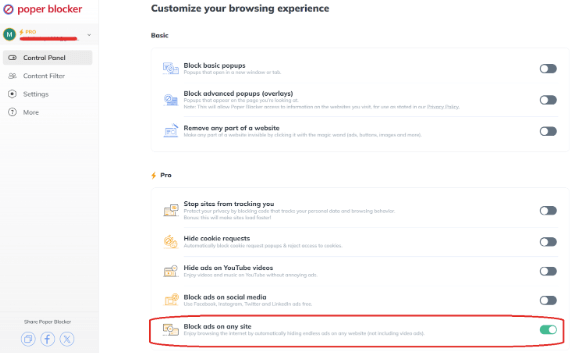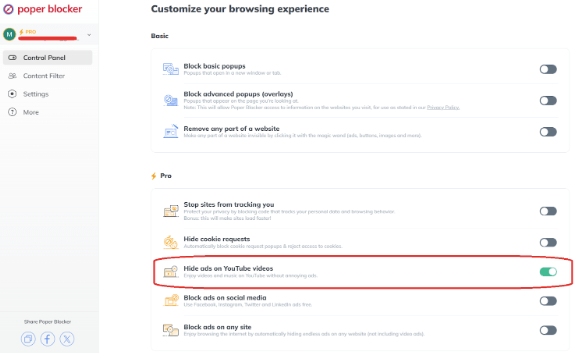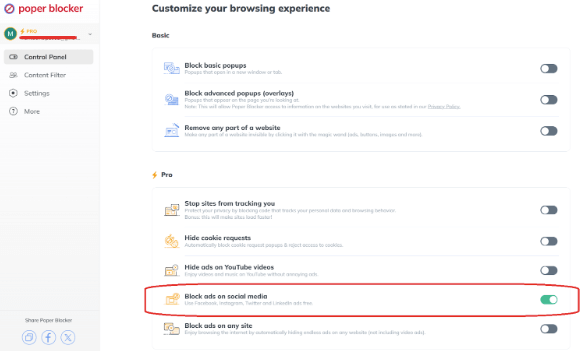Online ads are everywhere. From spam popups that interrupt your video binge-watching to banners that crowd your favorite websites, the digital space seems cluttered with advertising. But why has it reached the point where there are just too many ads, and more importantly, why are these so annoying?
Studies reveal a stark reality: a whopping 70% of internet users find digital ads annoying, and a similar percentage report a negative impact on their perception of brands due to poor ad experiences. This sentiment is echoed across various platforms, with users lamenting the intrusion of ads into their online activities.
Why are ads so annoying now?
Advertisers are finding it harder to reach their audience online because the landscape has changed. Below is an examination of some of the core factors behind the increased frustration:
Interruption and Distraction
The basic intention behind advertising is to be noticed but in more recent times, this has become increasingly invasive. These days, ads burst out right in the middle of videos abruptly interrupting what is happening.
It is not just a minor disturbance but also a huge obstacle to internet content enjoyment. Imagine getting into an article or video only to be jerked out by an ad; this is tiring and does not make one enjoy online spaces anymore and it’s one of the reasons why users want to find ways to block distractions.
Irrelevance
Another major issue is irrelevance. Given the amount of intelligence technology these days has reached, you would think there should be relevant targeted ads. However, they often miss the mark. Advertisements for things that users have no interest in keep coming up on their screens thereby making them feel spammed with billboards nobody would ever buy.
Overload
The number of ads being posted has gone beyond the limits that most people can handle. Websites are flooded with banners, sidebars display recommendations while videos start after commercials which cannot be skipped.
This saturation makes it challenging to find the actual content one is looking for. Navigating through this online maze becomes even more frustrating leading to feeling lost among countless advertisements.
Privacy Concerns
There are fears about privacy as a result of targeted ads that intrude on people’s lives too much. The realization that one’s online activities, preferences and at times personal information are being monitored with the aim of generating ads might be quite unsettling for many individuals out there. This breach of privacy adds insult to injury since it appears as if one’s personal space has been invaded upon by others without consent. This reaction against ad tracking shows how sensitive people have become over use and protection of private data in cyberspace.
These elements combined raise questions about whether or not advertising today is more irritating than before. The interruption of content, irrelevance of the ads, overwhelming presence, and privacy concerns combine to create a user experience that is far from ideal, pushing many towards seeking solutions to block or limit these advertisements.
Where do people encounter online ads the most?
The internet is awash with too many ads, each trying to commandeer the user’s attention. These ads are not randomly placed; they are carefully placed where they will be most noticed and engaged with. Here is a closer look at the types of online ads and where they dominate:
News and Media Sites
Advertisers love these platforms. The moment users visit this site for the latest updates, their eyes are overwhelmed by countless ads on it. That means top-of-page banner ads, videos that play before content, etc.
It’s simple: high traffic means more visibility. Nonetheless, in many cases this results in an overbearing user experience that pits news against advertisements for space and attention resources to avail a distracting environment from the main objective of delivering news.
Read More: How to Block Ads on News Sites and Stop Distractions
Social Media
Facebook, Instagram, Twitter, and LinkedIn as examples have become ad-heavy environments. These platforms collect massive data on their users enabling them to have highly targeted adverts. The sheer number can be daunting though this may make adverts more relevant.
On social media platforms like feeds, stories or even as sponsored messages, there are a lot of adverts making them one of the most saturated areas online. Given their personal nature, these spaces may feel invasive, blurring social interactions with commercial solicitations.
YouTube
For many users, video ads on YouTube remain controversial issues till date. Such an ad could be a pre-roll, which plays just before the video you are about to watch or mid-roll interruptions or other forms of interruption that come up during your viewing session thereby significantly causing interference to smooth the viewing process.
But YouTube has found a way of tailoring its ads according to viewer’s interests thanks to its algorithm-driven approach. This does not mean that they are less irritating either way you put it. With an extensive audience base and engaging video content availability, advertisers find it attractive hence leading to overabundance of adverts on this platform.
Streaming Services
While paid streaming services often promise ad-free viewing, many free or lower-tier options come with ads. These may include short clips between episodes or full commercial breaks. Ads can be particularly disruptive when they interrupt immersive content such as movies and TV shows, because they take viewers out of the experience. With the increasing popularity of streaming, we will see more and more ads being used to monetize these platforms reaching a larger audience.
Read More: How to block pop-ups on movie streaming sites
Blogs
There are a lot of ads on blogging websites that have made them major sources of income for most bloggers. Various forms of ads appear on blogs such as:
- Banner ads
- In-text links
- Sponsored posts
Monetizing without degrading user experiences is the goal of most bloggers hence; finding the best mix is not always easy. Because they are often personal and tailored to specific subjects, blog advertisements tend to feel alien or overly aggressive sometimes, especially when there’s no good match with the page topic.
Entertainment Websites
Entertainment sites like online magazines, gaming pages, and celebrity gossip portals also come under this category that have a lot of ad support for it. These sites target various demographics making them attractive for advertisers. These adverts can be rather distracting, owing to dynamic elements like flashy animations that insistently grab attention. The fun and leisurely nature of such websites means that they distract much from what users are supposed to enjoy while on this type of web page.
Apart from these main locations, ads are found on many different platforms and services online. These advertisements can be found everywhere, from search engines to e-commerce websites.
It is obvious why certain ads are placed there: this is because it is where most of the users will be found. However, as the adverts grow more rampant and invasive, more people get irritated about their presence, forcing them to look for viable ad-blockers that will help them repossess a tidier internet without much congestion.
Use Poper Blocker to block ads, everywhere
Most web users find it almost impossible to browse the internet without encountering ads. Poper Blocker is a Chrome and Edge browser extension with an effective solution for this challenge.
By installing this tool, one can keep away from too many ads on websites, including some of the most ad-intensive platforms like social media, news sites, and video-playing services.
Ad Blocking on Any Website
One of the features that make Poper Blocker so appealing is its “Block ads on any site”, which simply means that you don’t have to be perennially bombarded with advertisements.

This feature works quietly in the background once activated, hiding any advertisement that may appear whilst browsing through any website visited. This includes stopping pop-up ads, those annoying banner adverts, or sidebars that clutter your screen when all you want is just to concentrate on what you are reading or watching. It is worth noting however that while this capability will be able to get rid of most types of ads, it does not block video ads.
Ad Blocking on YouTube
For many people, YouTube is a daily destination for entertainment, learning and relaxation. In such situations though, unskippable ads and frequent interruptions can really spoil the mood as well as dilute the content being viewed or listened to some extent.

Poper Blocker has provided relief for this by introducing “Hide ads on YouTube videos”. By turning it on while using YouTube, people can now watch videos and listen to music without being bothered by advertisements hence making their experience more enhanced.
Read More: How to Block YouTube Ads on Chrome
Ad Blocking on Social Media
On social media platforms targeted advertising often results in sponsored posts clogging up people’s feeds. “Block ads on social media” offered by Poper Blocker removes advertisements from Facebook, Instagram, Twitter and LinkedIn, among other platforms thus cleaning your experience in these areas up again.

For example; what if instead of seeing unwanted ads, we only saw content from our friends and family’s pages that we actually care about?
Simplicity and efficiency are what define Poper blocker which provides a direct way of improving one’s internet experience. By addressing the primary sources of ad frustration, Poper Blocker helps users reclaim control over their online environment, making browsing a pleasure rather than a chore.
Read More:
Don’t let ads ruin your day. Get Poper Blocker today!
Take a stand for a cleaner, more enjoyable online experience
It could have been expected that the internet, having a massive number of resources and an infinite amount of information, would be a place where people can have ease while discovering new things rather than get frustrated or interrupted. However, for many users, this has become a constant battle to fight off ads that crowd their screens and disrupt the flow of information. Poper Blocker is a formidable companion in this fight against ad overload, as it offers a seamless solution to the problem.
When you add Poper Blocker to your browser, you do not just block unwanted ads; you are taking a stand for a cleaner and more enjoyable online experience. It is about regaining control over what you see and when you see it, in order to ensure that your time on the internet is spent as desired. It’s not just likely but with Poper Blocker, it’s within reach: an ad-free online browsing experience. No more too-many-ads frustration—just smooth uninterrupted browsing!
FAQs
What makes an ad effective instead of annoying?
The right advertising strikes a balance between being seen without interrupting the user’s activities on the internet. This is based on personalization; user preference-oriented ads that consider their browsing habits are more likely to be accepted. Time and context are also important factors—ads that appear in time and in sync with what users are doing may improve rather than worsen user experience.
How do ad blockers affect the economics of the internet?
While there are benefits of using an ad blocker, they have a dual role to play as far as the internet’s economic model is concerned. On one side, they pose a challenge to the conventional ad-supported model used by many websites, and this means less revenue for them because content creators and service providers rely on advertising. On another hand, such an application forces marketers and advertisers to invent new ways to get through to people that will not disturb them so much or distract their attention from what they are doing.
Can websites tell if I use ad blockers?
Yes, many sites can detect when someone has installed an ad blocker. There may be some sites asking you to turn it off before you view their content while others can offer a subscription fee for either ad-light or no ads at all. Consequently, living in an advertisement-free online environment remains under discussion between digital natives who prefer cleaner browsers and publishers aiming at sustainable earning sources.
Can using ad blockers lead to ethical considerations?
This raises ethical questions about user experience versus content monetization. However, while users are entitled to clean web browsing without interruptions, content creators also deserve monetary value for their work. The moral consideration lies in striking a balance that respects both parties’ wishes which would facilitate a transition towards unobtrusive advertisements supporting free content while maintaining user comfort.
How do advertisers adjust to increased usage of ad blockers?
Advertisers are increasingly using more advanced strategies in order to engage users amidst the increasing use of ad-blockers. This involves developing more relevant, engaging content that improves the user’s experience, incorporating native advertising and sponsorship into the platform’s content, as well as monetizing through sponsored ads or subscriptions. The objective is to create messages that resonate with the audience rather than lecturing them with intrusive ad strategies; aiming at genuine interest and interaction.